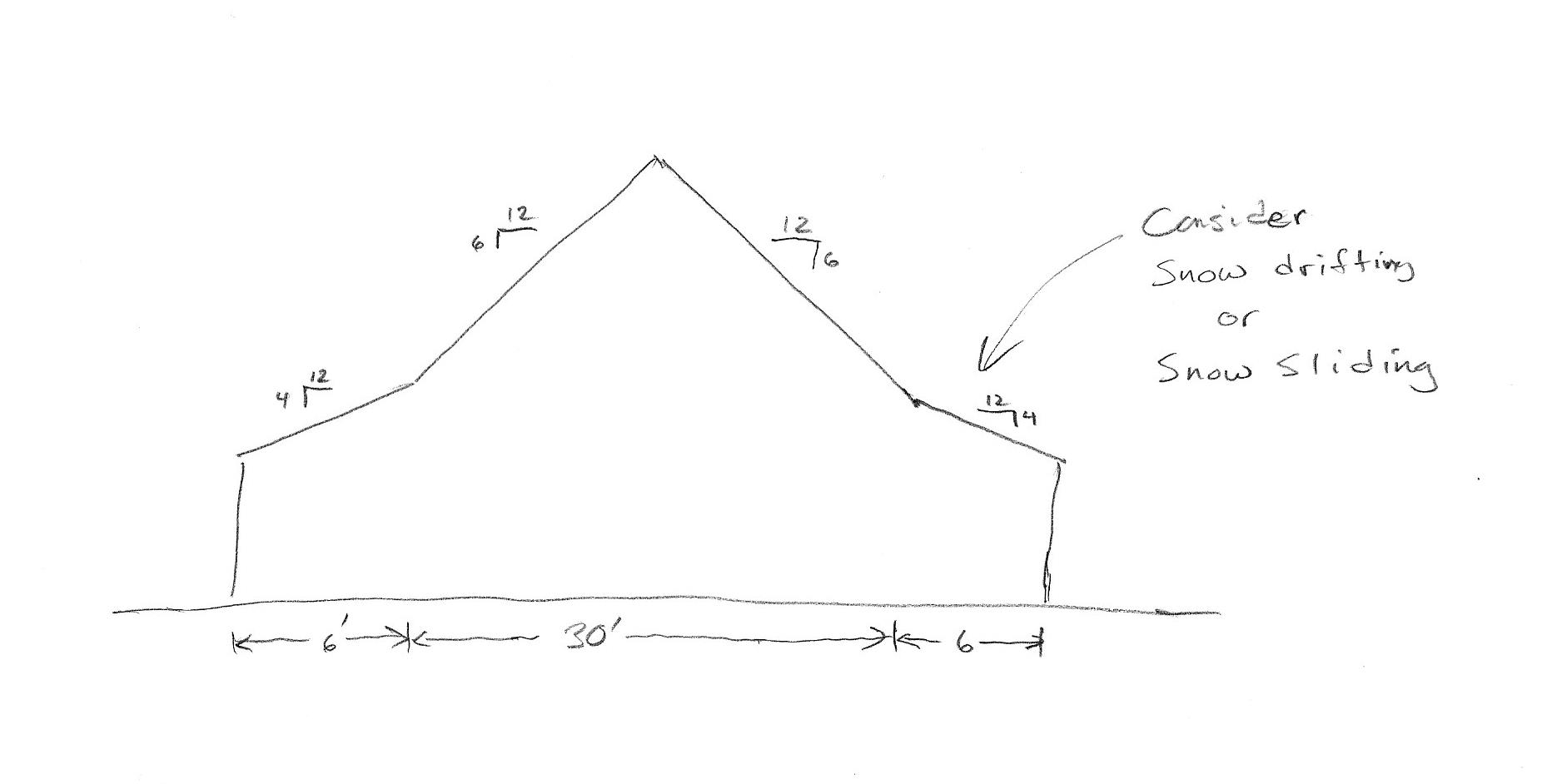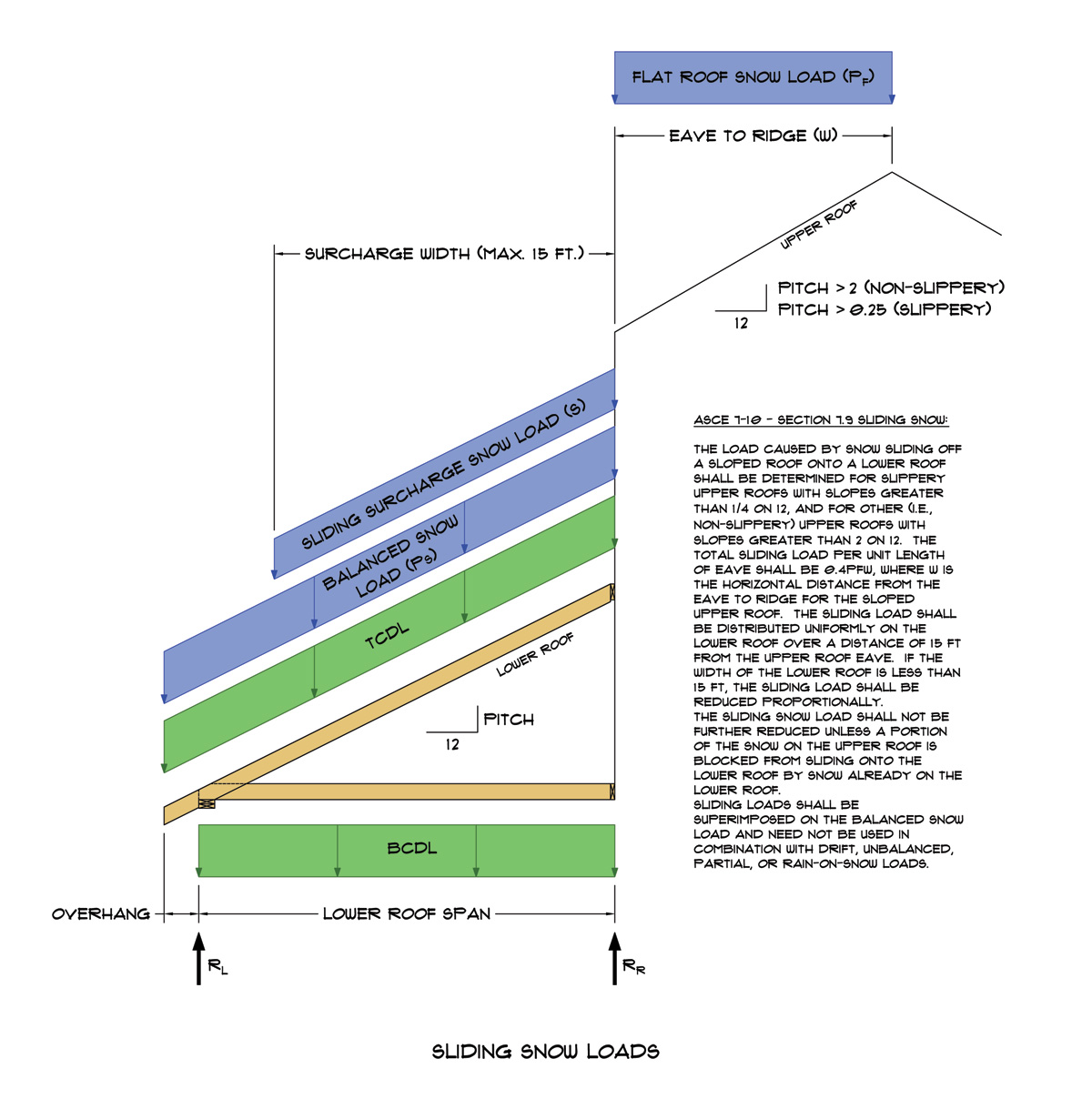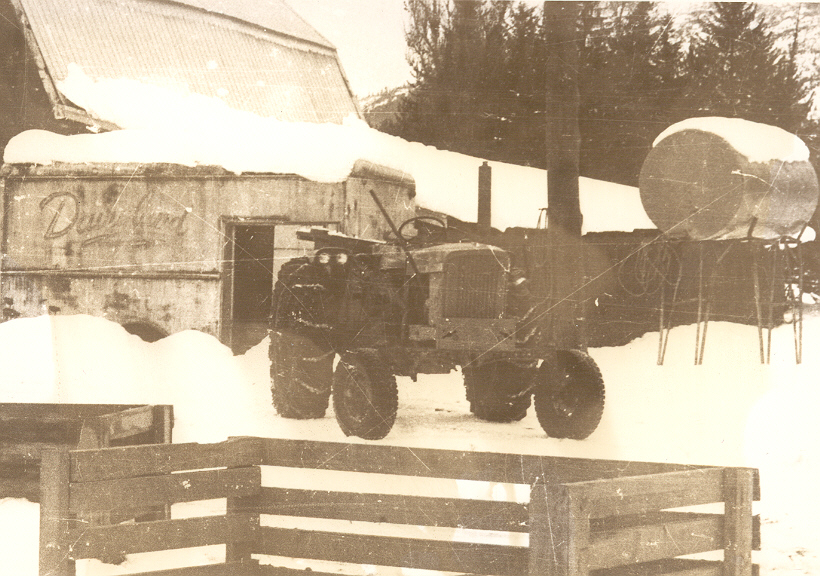I have a roof layout as shown below:

My thinking was to cover all my bases by applying a sliding snow load to the lower portion of the roof (4:12 pitch portion). However, after reading the paragraph in section 7.9 of the ASCE 7-10 which states: "The sliding snow load shall not be further reduced unless a portion of the snow on the upper roof is blocked from sliding onto the lower roof by snow already on the lower roof.", I am wondering if a sliding snow load should even apply?
I am curious as to how others treat this sort of situation with a duopitch roof.
A confused student is a good student.
Nathaniel P. Wilkerson, PE

My thinking was to cover all my bases by applying a sliding snow load to the lower portion of the roof (4:12 pitch portion). However, after reading the paragraph in section 7.9 of the ASCE 7-10 which states: "The sliding snow load shall not be further reduced unless a portion of the snow on the upper roof is blocked from sliding onto the lower roof by snow already on the lower roof.", I am wondering if a sliding snow load should even apply?
I am curious as to how others treat this sort of situation with a duopitch roof.
A confused student is a good student.
Nathaniel P. Wilkerson, PE



